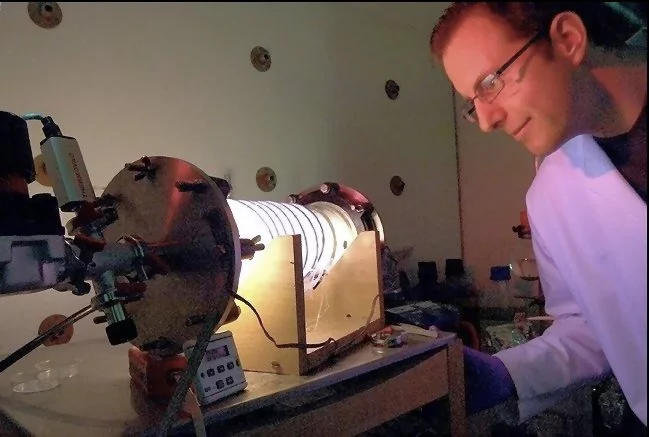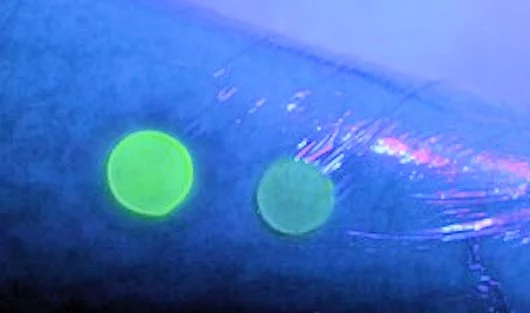Serious burns can lead to infection and potentially fatal toxic shock syndrome (TSS). Once an infection sets in, it is vital to begin treatment quickly to avoid or minimize a transition to TSS. The problem is, removing dressings to check for infection can be painful, slow the healing process and increase the chance of scarring. A prototype dressing developed by chemists at the University of Bath in the UK alerts doctors to the first signs of infection by glowing under ultraviolet (UV) light.
Infection leading to TSS is one of the most dangerous complications associated with serious burns and early diagnosis is crucial. A child with even a relatively small burn who develops TSS can rapidly deteriorate within a few hours if left untreated, often leading to death. The only clinical sign in the early stages of infection may be a high fever, which is not a finding specific to TSS.
Knowing the danger of TSS, when a burn victim shows a fever, the physician must check for infection. This requires the painful and often counterproductive removal of the dressing to collect samples for analysis, which currently takes from 24 to 48 hours. This is an uncomfortably long delay in treating a life-threatening infection.
The new dressing, developed by chemists from the University of Bath, working in cooperation with doctors at the South West Paediatric Burns Centre at Frenchay Hospital in Bristol, contains nanocapsules composed of fatty acid stabilized lipid bubbles break that down in the presence of bacterial toxins. This means that their contents of fluorescent dye, and which could also include antibiotics, are released only in response to a bacterial infection. The dye glows when exposed to UV light, providing an early and obvious indication of burn wound infection.

“Around 5,000 children a year in England and Wales are hospitalized or treated in hospital with serious burns, mostly scalds caused by tea and coffee." explains Dr. Toby Jenkins, project leader and Reader in Biophysical Chemistry at the University of Bath. "Current methods take between 24 and 48 hours to get an answer as to whether the wound is infected. However, our burns dressing gives a simple color change under UV light if a pathogenic, disease-causing bacteria is present in the burn, meaning clinicians can be alerted quickly to a potential infection.”
The prototype has been tested on skin samples in the lab and is currently being engineered to improve its stability and shelf-life. The researchers expect to start safety trials on healthy human volunteers in four years.
The video below presents additional information about the burns dressing project.
Source: University of Bath




